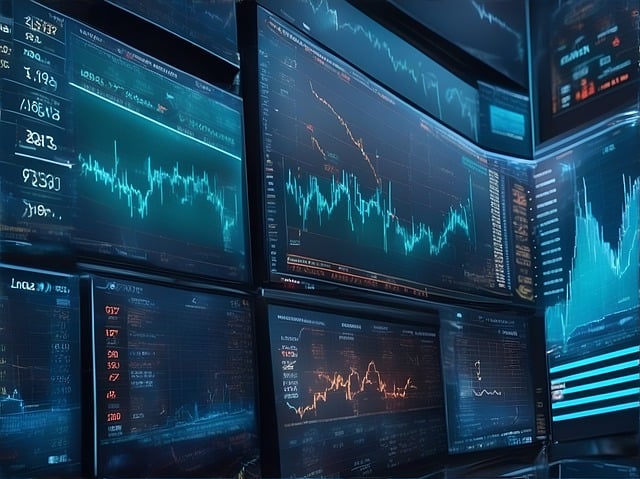The Evolution and Impact of AI Trading Bots in Financial Markets
The world of finance has seen a dramatic transformation over the last few decades, particularly with the advent of technology. Among the thousands of innovations that have emerged, AI trading bots stand out as one of the most significant advancements. This article delves deep into the mechanics of AI trading bots, their advantages, disadvantages, and their future in the financial landscape.

Understanding AI Trading Bots
Before diving into the intricacies of trading bots, it’s essential to understand what they are. AI trading bots are automated software programs that utilize algorithms to make trading decisions on behalf of their users. They can analyze vast amounts of data within seconds, making them incredibly efficient compared to human traders. In essence, these bots are designed to eliminate the emotional aspects of trading, focusing purely on data and statistical analysis.
How AI Trading Bots Work
The operation of AI trading bots involves several processes, including:
- Data collection: AI trading bots gather relevant data from various sources, including financial news, market statistics, and historical performance.
- Data analysis: The bots use machine learning algorithms to analyze the collected data, identifying patterns and trends that are not easily noticeable to human traders.
- Decision-making: Based on analyzed data, the bots determine trading strategies and make decisions—whether to buy, sell, or hold an asset.
- Execution: The bot executes trades on behalf of the user, often at lightning speeds, capitalizing on short-lived opportunities in the market.
The Learning Capabilities of AI Trading Bots
What sets AI trading bots apart from traditional algorithms is their learning capability. Leveraging techniques such as deep learning and reinforcement learning, these bots can improve over time through experience. In my opinion, this adaptability not only enhances their performance but also gives them a competitive edge in the rapidly changing financial markets.
The Benefits of Using AI Trading Bots
The adoption of AI trading bots comes with a plethora of benefits, both for novice and seasoned traders:
1. Emotion-Free Trading
One of the most significant advantages of AI trading bots is their ability to operate devoid of emotional biases. Unlike human traders, who might be swayed by fear or greed, bots stick to their mathematical algorithms. This consistency can often lead to more rational trading decisions, reducing the chances of mistakes that stem from emotional reactions.
2. Speed and Efficiency
AI trading bots can analyze data and execute trades faster than any human ever could. They capitalize on market fluctuations in real-time, which is crucial in today’s fast-paced trading environment. In my view, this speed allows traders to take advantage of price discrepancies that may only last for split seconds, providing opportunities that human intuition might miss.
3. 24/7 Market Monitoring
The financial markets operate around the clock, especially with the rise of cryptocurrency trading. AI trading bots can monitor and trade in these markets non-stop, allowing traders to participate globally without the stress of staying awake or being physically present at a trading desk.
4. Diversification
AI trading bots can manage multiple accounts or trade various assets simultaneously, which enhances diversification. Such diversification is vital in risk management strategies. Personally, I believe that this ability to spread out risk can significantly safeguard a trader's portfolio during volatile market phases.
Challenges and Limitations of AI Trading Bots
Despite their numerous benefits, AI trading bots are not without their challenges. It’s crucial that potential users are aware of these limitations:
1. Dependence on Historical Data
AI trading bots primarily base their algorithms on historical data, which may not always predict future performance. Market conditions can change rapidly due to unforeseen circumstances, and the bots may fail to adapt quickly enough. In my perspective, while these bots are incredibly powerful, they require careful monitoring and sometimes human intervention to remain effective.
2. Technical Glitches
Like any software, AI trading bots can experience technical issues, including bugs, connectivity problems, or server outages. Such glitches in critical moments could have dire consequences. It’s essential for traders to have contingency plans in place to mitigate such risks.
3. Regulatory Concerns
The growing popularity of AI trading bots has raised questions about regulation and oversight. As these technologies evolve, regulatory frameworks may struggle to keep pace. For instance, issues related to market manipulation or insider trading can arise with poorly designed bots. In my opinion, ongoing dialogue about regulations in this area is necessary to ensure a fair playing field for all participants.

The Future of AI Trading Bots
Looking ahead, the integration of AI in trading is likely to deepen. With advancements in machine learning and data analytics, future AI trading bots could become even more sophisticated. They may utilize advanced predictive analytics to forecast market movements better. Additionally, as ethical concerns and regulations evolve, I believe we can expect more transparency in how these algorithms operate.
Personal Insights
In my view, the rise of AI trading bots represents a paradigm shift in the way we approach investing. While traditional methods have their place, the efficiency and precision that these bots offer cannot be overlooked. However, it is critical for traders to maintain a balanced approach, continuously monitoring and optimizing their strategies. As with any tool, the key lies in how effectively we utilize it.
Conclusion
AI trading bots are undeniably reshaping the financial landscape. They bring unparalleled speed, efficiency, and emotional neutrality into the trading arena. However, the challenges they pose must not be ignored. As we continue to explore the capacity of AI within trading, we should remain vigilant against its limitations. Ultimately, the most successful traders will be those who can effectively leverage these tools while understanding the human element that remains central to trading.
With the right balance of technology and human insight, the future for traders—both amateur and professional—looks brighter than ever before.